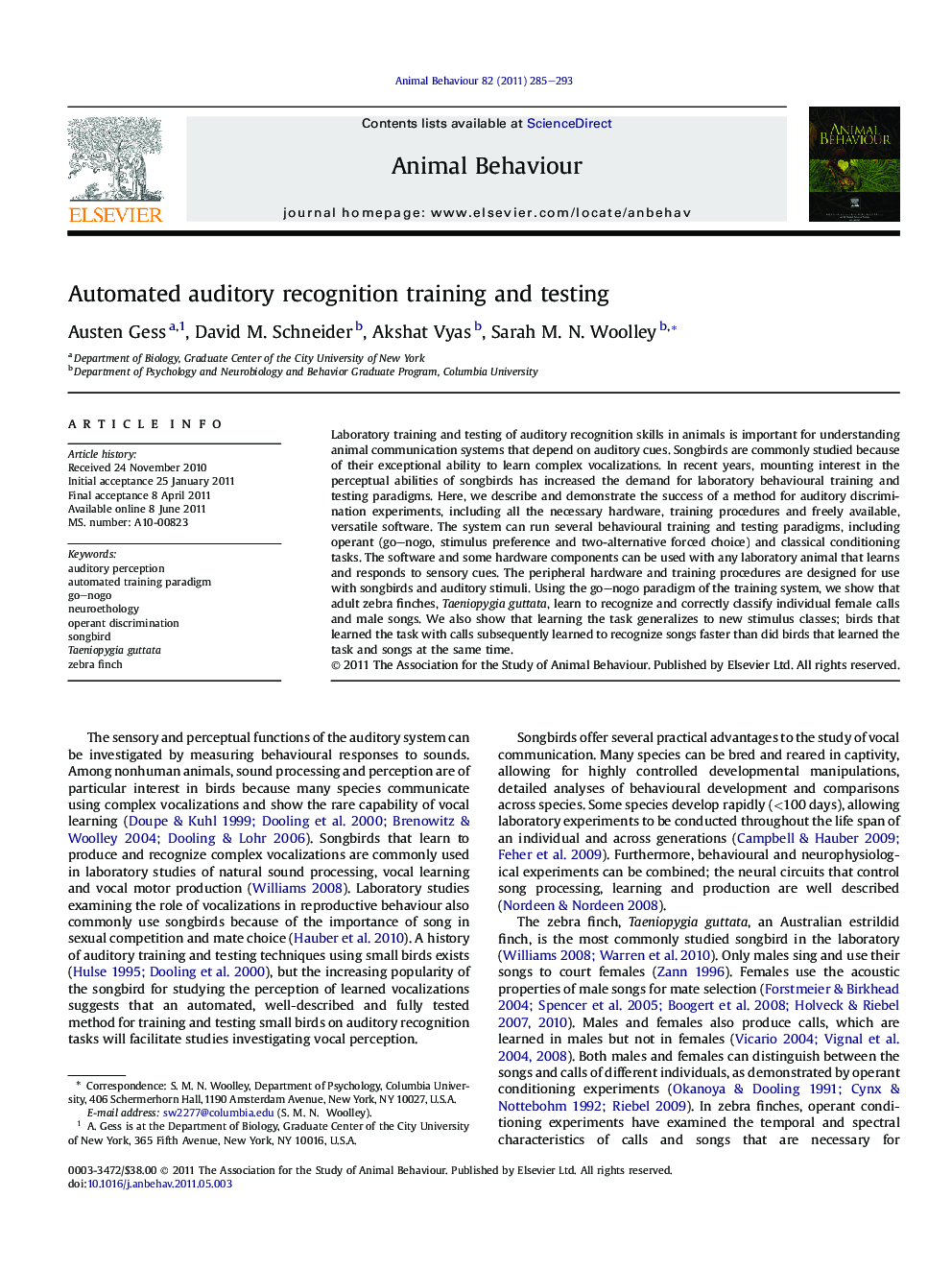| Article ID | Journal | Published Year | Pages | File Type |
|---|---|---|---|---|
| 2416997 | Animal Behaviour | 2011 | 9 Pages |
Laboratory training and testing of auditory recognition skills in animals is important for understanding animal communication systems that depend on auditory cues. Songbirds are commonly studied because of their exceptional ability to learn complex vocalizations. In recent years, mounting interest in the perceptual abilities of songbirds has increased the demand for laboratory behavioural training and testing paradigms. Here, we describe and demonstrate the success of a method for auditory discrimination experiments, including all the necessary hardware, training procedures and freely available, versatile software. The system can run several behavioural training and testing paradigms, including operant (go–nogo, stimulus preference and two-alternative forced choice) and classical conditioning tasks. The software and some hardware components can be used with any laboratory animal that learns and responds to sensory cues. The peripheral hardware and training procedures are designed for use with songbirds and auditory stimuli. Using the go–nogo paradigm of the training system, we show that adult zebra finches, Taeniopygia guttata, learn to recognize and correctly classify individual female calls and male songs. We also show that learning the task generalizes to new stimulus classes; birds that learned the task with calls subsequently learned to recognize songs faster than did birds that learned the task and songs at the same time.
